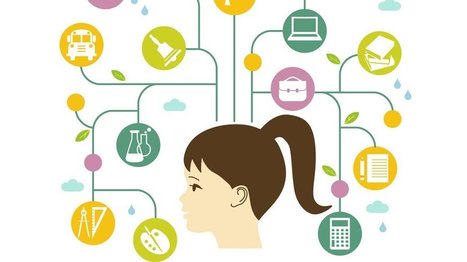Tools for Self-Directed Learning
As they progress through middle and high school, students are expected to take on increasing responsibility for their learning, with more out-of-class assignments that require independent research, reading for understanding, and wider application of classroom lessons.
Our new book, Teaching Students to Drive Their Brains: Metacognitive Strategies, Activities, and Lesson Ideas, suggests that learning and applying strategies to “explain it to your brain” can help students improve their study habits. We note some of those strategies here.
Don’t just read—learn. There can be a huge difference between reading the words on the page and learning from them. To think through the ideas in a reading assignment and improve recall of what they have read, students might benefit from:
Creating diagrams, pictures, and symbols to represent key ideas as they take notes;
Summarizing passages in their own words (some students might enjoy the challenge of capturing the essence of an assignment in a tweet); and Searching for cues about the most important content. For textbook assignments, students can go back and review features like key terms, subtitles, and informational graphics after their first reading to reinforce crucial facts. When reading fiction or poetry, identifying literary devices such as metaphors and symbols can help uncover deeper meaning.
Learn more / En savoir plus / Mehr erfahren:
https://gustmees.wordpress.com/2014/10/03/design-the-learning-of-your-learners-students-ideas/
http://www.scoop.it/t/21st-century-learning-and-teaching/?&tag=Metacognition



 Your new post is loading...
Your new post is loading...








Tools for Self-Directed Learning
As they progress through middle and high school, students are expected to take on increasing responsibility for their learning, with more out-of-class assignments that require independent research, reading for understanding, and wider application of classroom lessons.
Our new book, Teaching Students to Drive Their Brains: Metacognitive Strategies, Activities, and Lesson Ideas, suggests that learning and applying strategies to “explain it to your brain” can help students improve their study habits. We note some of those strategies here.
Don’t just read—learn. There can be a huge difference between reading the words on the page and learning from them. To think through the ideas in a reading assignment and improve recall of what they have read, students might benefit from:
Creating diagrams, pictures, and symbols to represent key ideas as they take notes;
Summarizing passages in their own words (some students might enjoy the challenge of capturing the essence of an assignment in a tweet); and Searching for cues about the most important content. For textbook assignments, students can go back and review features like key terms, subtitles, and informational graphics after their first reading to reinforce crucial facts. When reading fiction or poetry, identifying literary devices such as metaphors and symbols can help uncover deeper meaning.
Learn more / En savoir plus / Mehr erfahren:
https://gustmees.wordpress.com/2014/10/03/design-the-learning-of-your-learners-students-ideas/
http://www.scoop.it/t/21st-century-learning-and-teaching/?&tag=Metacognition